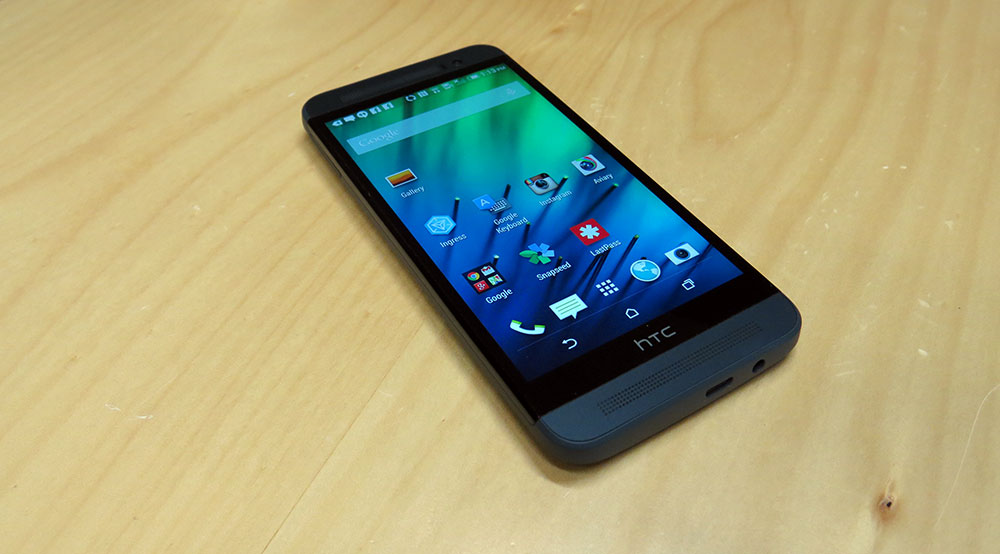
As HTC’s flagship efforts have intensified on their hardware design, the premium attached to that design has seen the purchase price of the phones go up. The One (M8) left consumers with little change out of $1000, owing to its head-turning aluminium body and fancy UltraPixel follow-up, the Duo Camera. If you’re a fan of HTC, you didn’t really have much of a choice other than to get on board.
What if HTC had another option up its sleeve, though? A One that come in with much the same hardware – all the important bits, anyway – but sacrificed the things that made the One (M8) such an expensive proposition? Facing competition undercutting its flagship at the low end – devices like the Nexus 5 – HTC has delivered a cheaper version of its One (M8) in the One (E8) that has allowed them to explore some alternatives to the choices it made earlier this year, and deliver a similar phone at a lower price.
So, what’s changed?
The biggest difference is the body. The E8 has a plastic finish that actually feels like a good compromise to the M8’s polished aluminum – it’s grippier and you don’t feel like it’ll slip out of your hand. Additionally, given the pictures we’ve seen of banged-up M8’s online (including our own review unit), if you drop the E8 you’re probably less likely to leave a dent in it.
On the back, there’s a straight-up 13MP shooter on the rear of the device. It’s not a fancy UltraPixel camera and the 3D effects made possible by the DuoCamera are gone without a trace, but it feels like this is a much better choice for consumers put off by the 4MP resolution offered by the M8. Disappointingly, the M8’s dual flash has been sacrificed for a more basic LED flash.
Finally, there’s also no IR blaster. You won’t be able to control your home entertainment devices with the E8.
If these trade-offs are okay, then you might like the E8. Bad news, though – it’s not coming to Australia through official channels. Our review unit was kindly supplied by Expansys, and it’ll set you back just a shade over AU $500 should you decide to buy one. There’s Misty Grey (our review unit), Polar White, Maldives Blue and straight-up Red (it seems nobody thought up a fancy name for that one — no, officially it’s actually Electric Crimson), with no weird regional colour exclusivity to worry about.
Coming in at a price that’s comparable to last year’s flagships, the E8 offers a compelling option that’s worthy of consideration if you’re in the market for a powerful new phone but don’t want to break the bank.
- Great HTC One design and build quality
- BoomSound speakers are as good as ever
- Low price for the same specs as the M8
- 13MP camera has no OIS – hold it steady!
- 16GB storage means you really do need that SD card
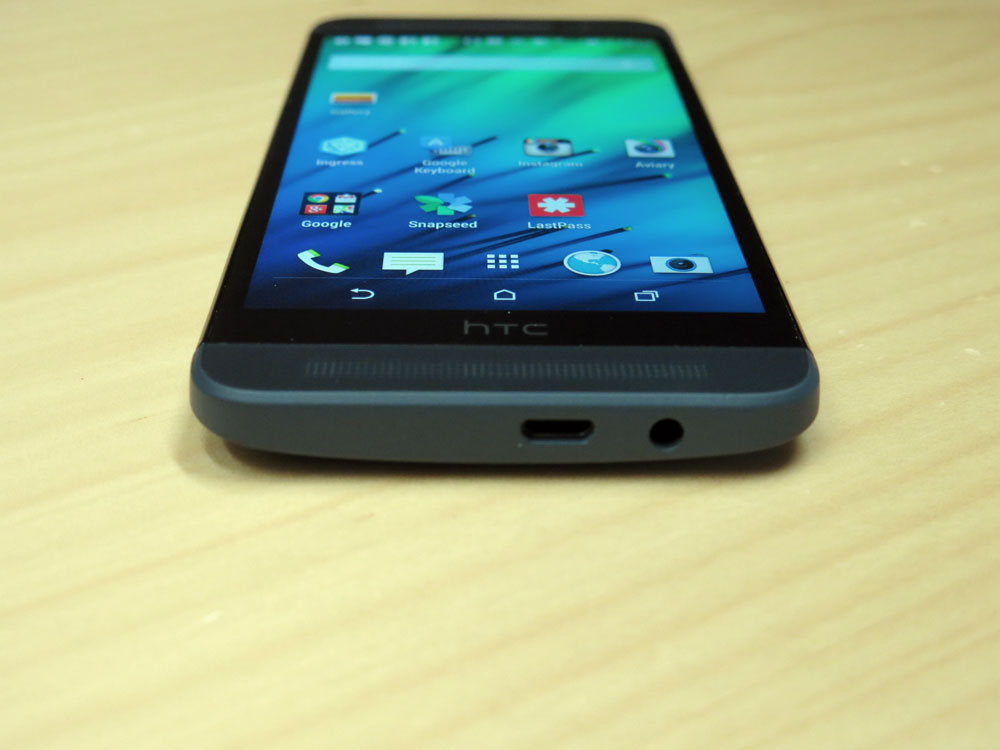
Hardware
As you can imagine, the E8’s hardware design is pretty much the same as the M8, just plastic. It’s a little bit thicker, but 15 grams lighter than its older, shinier brother. It feels like HTC’s essentially put the same circuit board(s) inside a plastic body with ports in the same locations, with one minor difference – the power button is now in the center of the top edge of the device.
This means you’re looking at the same drawbacks that we found with the M8’s physical design. The front-facing BoomSound speakers add vertical size to the device and the mysterious HTC “black bar” bezel below the screen makes a return, so the 5-inch 1080p screen doesn’t utilise as much of the front face as you’d like.
It seems that there’s a complementary accent colour on the E8’s body. Our Misty Grey unit has a frankly hot-looking gold accent on the power button, camera and flash. This seems to be different on the other variants – I think the gold/grey version might be the best, just quietly. This colour selection extends to the printed HTC logo on the back, although it’s not a shiny finish and thus a slightly different colour. The NFC logo on the back also appears to be stuck on.
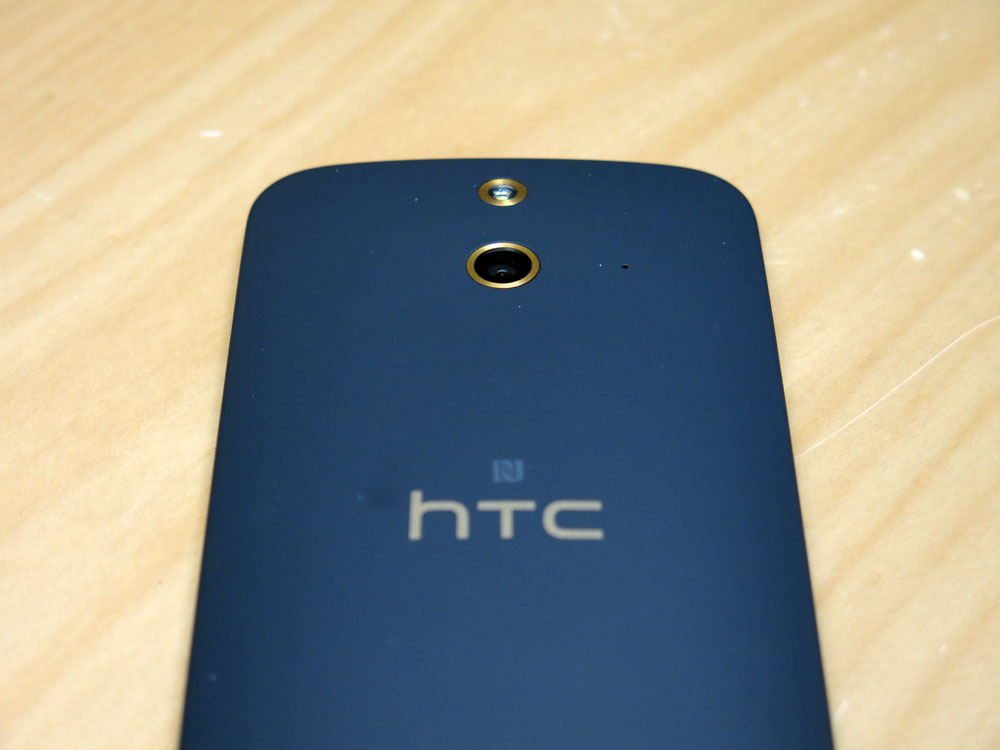
HTC’s made the black bezel around the screen extend slightly down the left and right edges of the phone, producing a slick effect that dulls the edges of the device if you run your finger off either side of the screen. The volume rocker is embedded within this glossy black edge on the right, as you’ll see in the photos.
Port placement is the same as on the M8 – just below the top of each edge you’ll find the SIM and MicroSD card slots, the Micro USB charging port is just off-centre on the bottom edge and the 3.5mm headphone jack is a little to the right of it. The only major change is the power button placement – HTC continues to insist on the top-edge power button and it’s dead-centre on the E8, but it’s less important than ever now that the company is shipping phones that wake up with a double-tap of the screen. If you must hit the power button though, it’s easy to find.
The rear has a great ergonomic curve that belies the thickness of the phone, and the matte soft-touch finish feels great in the hand. It also means that you can afford to be a little less cautious about handling the phone as it’s less likely to slip out of your hand than the M8 was. There’s also a subtle curve on the edges so the device doesn’t cut into your hands as you grip the body.
It’s a solid phone. There’s no creaks or flex in the body and it feels like it’ll stand up to the wear and tear of everyday life. Apparently there have been some issues with the matte finish rubbing off the Misty Grey version of the phone, but I haven’t had any such problem with the review unit.
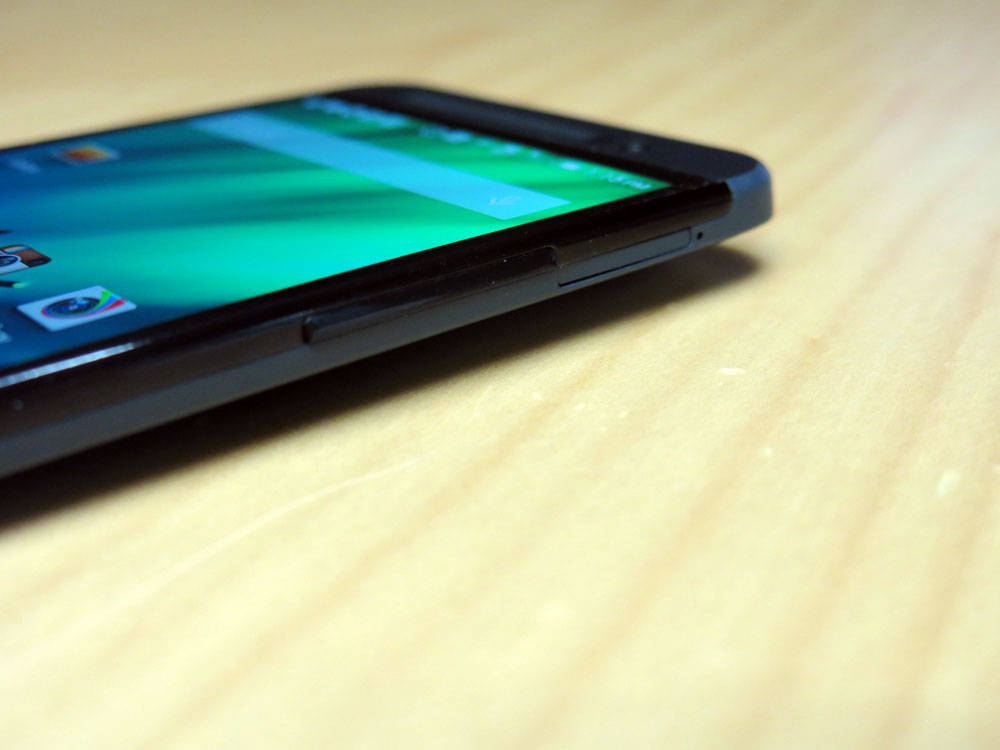
Screen
The E8’s screen appears to be the exact same Super LCD 3 unit as seen in the M8. That means blinding brightness (at max, anyway), great viewing angles and minimal discolouration when viewed off-axis. There’s also support for Double Tap to Wake and Motion Gestures as seen on the M8 that launch different apps when you slide left/right/up/down while the screen is off.
Battery life
With the same sealed-in 2600 mAh battery as the M8 coupled with the same internals, the E8 tends to last about the same time. It’s not going to soldier on overnight, but you can be confident that with moderate use at reasonable brightness you’ll be able to make it through the day.
The E8 also packs the same power saving options as the M8 with the same “extreme power saving mode” allowing you to eke out a little more runtime when the battery is running low by turning off nonessential parts of the phone. Reduce brightness, conserve CPU activity and disable vibration and background data, and your phone will last a while longer – it just won’t really be a “smart” phone any more as you won’t be able to run any apps beyond the dialer and messaging, email, calendar and a calculator.
Connectivity
Unsurprisingly, the E8 features the same connectivity as the M8. This means 802.11 a/b/g/n Wi-Fi, Australian 3G and 4G LTE for everything but Optus 4G Plus.
The E8’s GPS (with GLONASS) provides a solid location lock with no problems while navigating in Google Maps (and Ingress), and of course there’s Bluetooth 4.0 for connecting devices like fitness trackers and of course, Android Wear smartwatches.
Bluetooth connection, a particular bugbear of the M8, seems less wonky on the E8. Maintaining the connection with a watch and headphones worked just fine.
Sound
Given the E8’s M8 heritage, there’s no surprise here – BoomSound is present and accounted for. It’s loud, it booms, and it’s great. You probably won’t want to crank it up all the way, though. Music played through headphones is also loud and clear.
Performance
The E8 features a slightly different CPU to the M8, but it’s still a 2.5 Ghz quad core Qualcomm Snapdragon 801 paired up with 2GB of RAM. This phone is no slouch, so apps launch quickly and the phone is always fast and responsive. Geekbench and Antutu scores are included below for your perusal:
Camera
HTC’s moved away from the UltraPixel camera in the E8, and I couldn’t be happier about it. For me, the tradeoff of the 4MP image is one I’m no longer willing to make as I like to edit photos after I shoot them and crop to focus on details. At 4MP that produces a blurry image, but I wonder if HTC’s gone too far in the opposite direction.
It feels like the E8 has the same shooter seen in the company’s recent Desire 816. I found that camera was capable of producing some great photos, but it was unreliable and could just as easily ruin a shot as it could make it. On the E8, it feels like the camera is better at focusing and shooting quick action than it was in the Desire, but you still need to hold the phone steady or you’ll get a blurry result. This effect is far more prominent with a 100% crop at 13MP.
As far as I’m concerned, phone manufacturers don’t earn points for taking a good photo in bright lighting conditions. I’m far more interested in what happens when the light goes down, and while the E8 doesn’t disappoint it also doesn’t really do itself any favours. As long as you’re shooting some kind of light source, you’ll be OK but there are times when that light source would blow out a bit – especially when shooting HDR – and when combined with the lack of optical image stabilisation it really shows, again. I’d have preferred to see HTC go for a lower megapixel count with OIS (like the Nexus 5), but we are where we are.
Otherwise, the E8 is capable of all the M8’s tricks with the exception of the 3D depth features which, for me at least, were more gimmick than selling point on the M8. There’s still a rich set of shooting modes (Auto, Night, Panorama, Portrait, Landscape, Backlight and Text) along with Manual controls over White Balabce, Exposure, ISO, Shutter speed and focal distance and a number of live-preview effects and of course a High Dynamic Range (HDR) shooting mode. The camera software can also detect faces and take the picture automatically when it sees smiles.
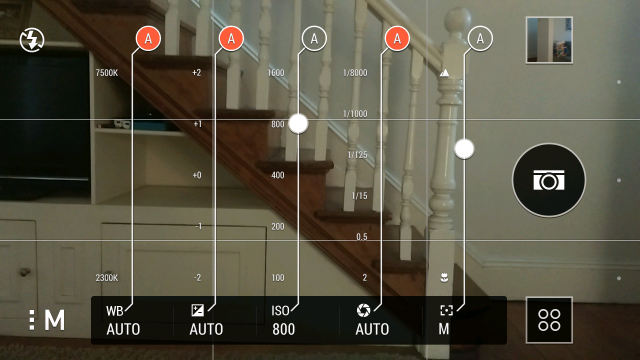
Edit tools provide effects like Red Eye Removal, Eye Enhancer (and brightener) Skin Smoothing, Lighting adjustments, Anti-shine and Face Contour changes. It’s comforting to know the features are there, but it seems unlikely you’ll use them often.
Video-wise, you’ll get 1080p shooting at 30 fps. Nothing amazing, but it’s still high definition. As on the M8, you also have the ability to shoot still photos while shooting video.
The front camera, or “Selfie Camera” as HTC has now come to call it, is the same 5MP unit seen on the M8.
Software
There’s little to say about the software on the E8 that hasn’t already been said about the M8… and the Desire 816… and other Desire models. Regular readers would be well aware that HTC’s Sense customisations produce some of the best Android devices around, and the E8 follows in the M8’s steps in this regard with the latest version – Sense 6.
The only real differences in software between the E8 and M8 are around software features that depend on hardware that’s not present in the E8. There’s no Duo Camera, so the 3D effects in the photo editor aren’t there, and there’s no IR blaster, so the TV remote control software is also missing. None of this should be terribly surprising.
It does come with some localised preloaded software – there’s Chinese TVB apps, WeChat and Weibo installed, alongside Twitter and Facebook. Of course, one of the first things I did was install the Google Keyboard as I’m now used to it, but HTC’s own keyboard has been much better in 2014 than in years gone by.
The E8 is running Android 4.4.2 out of the box, and there’s been no 4.4.4 update so far. Despite the ‘One’ in its name, updates aren’t guaranteed at the same speed as the premium One M8, but the similarity in the hardware between the phones should guarantee that it can ride the coattails of its big brother when it comes to software updates.
HTC One (E8)
- 5.0-inch 1080p Super LCD 3 display (441 PPI)
- 2.5 Ghz Quad core Snapdragon 801 w Adreno 330
- 2GB RAM
- 16GB storage with microSD
- 13MP rear BSI camera, 5MP front
- Wi-Fi a/b/g/n, Bluetooth 4.0, NFC
- Nano SIM
- Radios:
- GSM: 850/900/1800/1900 MHz
- WCDMA: 850/1900/2100 MHz
- 4G LTE: 3/7/38/39/40/41
- Android 4.4.2
- 2600 mAh battery
- 146.42 x 70.67 x 9.85 mm, 145g
Buy it now
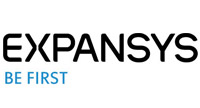
Ausdroid’s review unit was kindly supplied by Expansys. You can buy the HTC One E8 now for
$529.99 unlocked. Available in Maldives Blue, Electric Crimson, Polar White and Misty Gray.
The HTC One E8 is in many ways the phone I wish HTC had actually brought to market earlier this year. Any quibbles about its features are dismissed by the price point, which should win it more favour than almost anything else about the phone.
It’s worth noting that our review unit came pre-set to Chinese, so you’ll need to know how to change the language (it’s the grey button in the middle of the screen on startup). You can set it to English (Hong Kong) or English (USA). There’s no Australian option.
Without specifically setting out to do so, it seems HTC’s fixed a number of issues with the M8 in the E8. Why it isn’t coming to Australia officially might be more a function of carrier commitments than the quality of the device, as it’s extremely competitive against phones in the $500 price range.
What you get is a phone with the same dimensions and the same features as the $900 HTC One M8 (or at least, the ones that matter), in a form that comes in at a price that’s slightly above half of that phone’s price. Better yet, it doesn’t slip out of the hand and it produces higher resolution photos than its higher-priced sibling.
Expansys is selling the four colour variants of the E8 right now for $530, with shipping either $18 or $22 (depending on your choice of carrier). For under $550 you can import a phone that goes toe-to-toe with one of 2014’s biggest flagships that’s compatible with most of Australia’s 3G and 4G networks although you should check the handset’s band compatibility against the services provided by your carrier in your area before purchasing.

























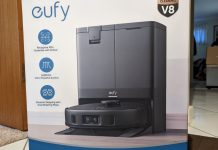
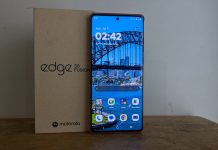
Many of those camera samples seem to have the ISO dialled down to avoid noise, producing images that have reasonable detail in the brighter areas but lacking in the shadows.
16GB on board storage. Immediate complete utter failure.
With MicroSD. Just like any Sont flagship.
You can’t install apps on the microSD, and the ability for apps being able to write data to the microSD has been chronicaly restricted in KK.
So any KK device really needs an absolute minimum of 64GB on board storage.
So Jason, overall would you take this camera over the 4mp ultrapixel camera in the M8?
From what I’ve read, this 13mp shooter isn’t stellar by any means, but is it better than the M8’s camera?
Wait for the new Desire Eye? 13MP cameras on both sides… Has a smaller battery than the One M8/E8 though…
Yes. I’d take this over the 4MP shooter in the M8, simply on MP count. You need to be a little careful of the conditions in which you use the camera, but it’s pretty serviceable.